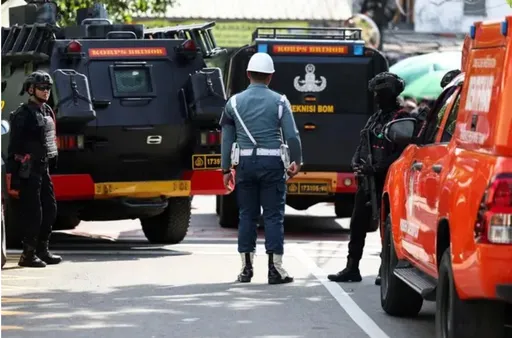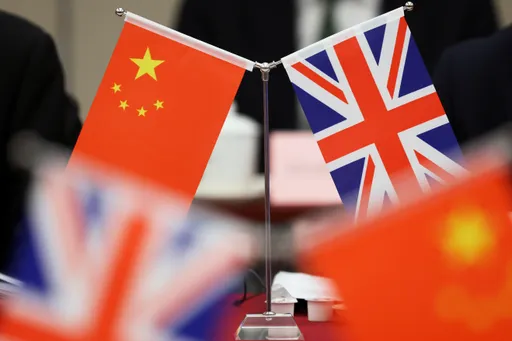Perhaps the most notable global shift in the past decade has been the rapid transformation in technological innovation. The 21st century has brought significant new developments for waging warfare, both intuitively and intentionally, as artificial intelligence (AI) increasingly becomes relevant and changes our world.
Militaries are now making hay in AI sunshine, and its application is considered almost as revolutionary as the discovery of gunpowder. AI allows machines – and weapons – to perform tasks like learning, planning, reasoning, and executing missions simulating human intelligence.
While AI has exciting prospects for knowledge-sharing and innovation, its significant development also raises serious concerns regarding its future implications on national security and strategic stability at the regional and international levels.
In 2017, Russian President Vladimir Putin said that “whoever reaches a breakthrough in developing AI will come to dominate the world.” He was stating the obvious and aiming to catch up to the US technologically.
In the case of AI, it is the technology driving the strategy.
Global AI military race
The use of AI in war is controversial but undeniably advancing. Thanks to the US and NATO’s unprecedented help, Ukraine has produced asymmetric results against Russian aggression. In this proxy war, AI, satellites, drones, and cyber capabilities rendered to the Ukrainian testbed have been central to the conflict thus far.
Lethal Autonomous Weapon Systems (LAWS) present several challenges and threats that need to be explored in light of the use of AI in military operations. These include AI-enabled systems, which can cause miscalculations that cannot only induce trust deficit among nuclear weapons states but can also lower nuclear thresholds, thereby fueling chances of preemptive strikes during crises – particularly given the race for this advanced weaponry. For example, between 2017 and 2021, the projected spending on Russian drones was $3.9 billion, China spent $4.5 billion, and the US spent $17.5 billion.
AI is being integrated into unmanned aerial vehicles (UAVs), LAWS, missile defence systems, submarines, and aircraft. The US National Security Strategy 2022 focuses on joint capability development and information sharing among allies alongside the simultaneous deployment of such technologies in a timely manner to safeguard a shared military-technological edge. Under the third offset strategy, the US has introduced a Global Surveillance and Strike (GSS) system to counter the proliferation of critical disruptive technologies, among others.
Meanwhile, China’s ambition is to become an AI superpower by 2030. In 2022, China claimed to succeed in developing an AI-enabled air defence system model to predict the trajectory of hypersonic glide missiles while being able to launch a swift counterattack. China is also developing a range of autonomous weapon systems. For instance, China has deployed robotics and unmanned systems on land, air, sea and space. Some of these systems are AI-enabled but are not in the targeting process.
Others, like Russia, are focused on the use of AI in the maritime domain, which includes a swarm of underwater combat drones. Israel’s Iron Dome anti-missile system independently detects and shoots down missiles.
In South Asia, India has established a Center for AI and Robotics (CAIR) under DRDO to bandwagon the arms race of AI for military purposes with AI-enabled weapons capabilities. Moreover, in India’s Land Warfare doctrine of 2018, there has been a significant emphasis on AI and its integration into military systems. With the two-front war bogey against Pakistan and China, India is motivated to acquire economic, diplomatic, and military support from the US, which also incorporates emerging technologies.
In this regard, Indian military experts have emphasised employing AI in military systems before it is too late. India has been developing the Multi-Agent Robotics Framework, which would likely act as a team of soldiers and assist the Indian army in future wars. India has also acquired 200 DAKSH Autonomous Robots also called Remotely Operated Vehicles (ROVs), for defusing bombs.
India is also collaborating with Japan in the field of robotics and AI while simultaneously working towards more sophisticated uses of AI in the defence and military sectors. These include image interpretation, target recognition, objective range, kill zone assessment of missiles, and utilisation of robots in more ungraded forms. The recent Indo-US technology, space and defence initiatives also include cooperation with regard to AI and quantum computing to counter China.
Experts believe that there is a need to rethink traditional concepts of deterrence and strategic stability in this third nuclear age due to greater emphasis on emerging technologies. AI-induced systems can process data much faster than humans, which can help shorten the OODA (Observe-Orient-Decide-Act) cycle, thereby removing the fog of war.
Nevertheless, AI still cannot be programmed with situational awareness mirroring human understanding. During a crisis, if states use AI to detect and target, and the adversary perceives that its opponent will act sooner via AI, it can compel the adversary to resort to preemptive strikes due to the fear of being attacked first. Also, any glitch in the system and data which requires factoring in situational awareness – which AI lacks – can result in incorrect data analysis and can lead to escalation or even nuclear use.
Swarms of surface/underwater unmanned vehicles may be used to detect nuclear submarines. However, other experts are of the view that due to the vastness of the ocean, hundreds and thousands of underwater swarms may be needed to detect Ballistic Missile Submarines (SSBNs), as most of them patrol open seas.
So, the most conducive option will be to use AI-enabled detection capabilities at identifiable choke points. However, this move itself can be considered escalatory in contemporary times. For instance, an Indian SSBN – INS Arihant – was deployed near Pakistani waters during the crisis in May 2019, which was seen as an escalatory move.
India is also opting for regional maritime domain awareness through which it has an edge to map data in the Afro-Asian Ocean via AI-enabled technologies that can be used in pre-conflict scenarios. This can result in hyper-war due to fast data analysis and have a drastic impact on the strategic stability between India and Pakistan.
Interestingly, like nuclear weapons, the monopolies of major powers may not last with AI, including LAWs. Over time, if these technologies are not regulated under international law, LAWs will also proliferate and become vulnerable. The consequences of such technologies proliferating to quasi-state actors could be of great concern.
Foregoing a pre-emptive ban on the development of LAWS would be an ideal step rather than an effort to regulate their deployment and use. Additionally, non-legally binding Transparency and Confidence Building Measures (TCBMs) are only interim and half-measures to deal with the grave threat the world is facing today. There is a need for a collective moratorium on the use of AI for military purposes until a legally binding instrument is concluded as the most viable solution.
The whole concept of deterrence lies in the fact that these weapons are used to deter an adversary. If, by any means, target selection and decision-making are left with AI-enabled weapons, “to deter” may just lose its credence, where the nuclear taboo, which has been maintained since nuclear use by the US, may be broken if machines decide to use these weapons.
This shows that AI will alter deterrence dynamics and coercion between nuclear weapon states in unique ways.




























